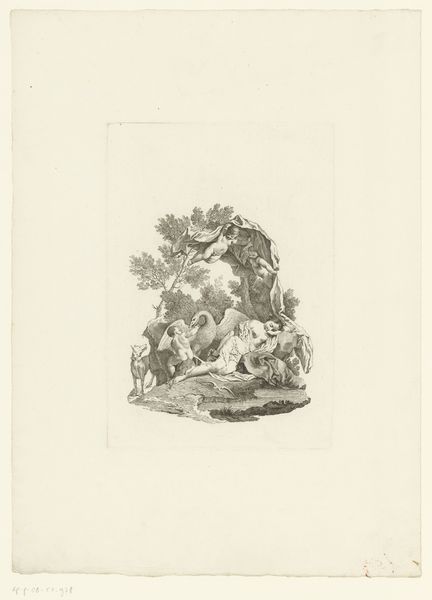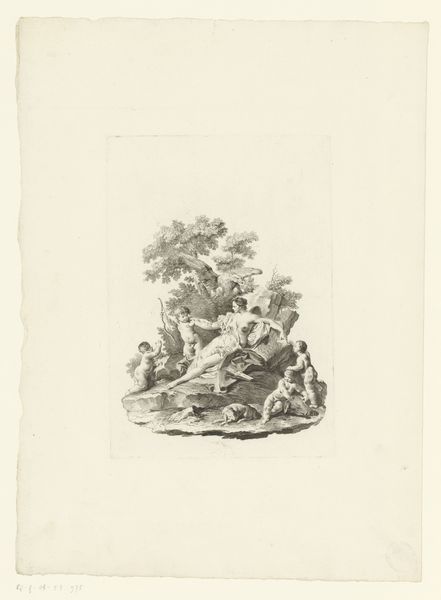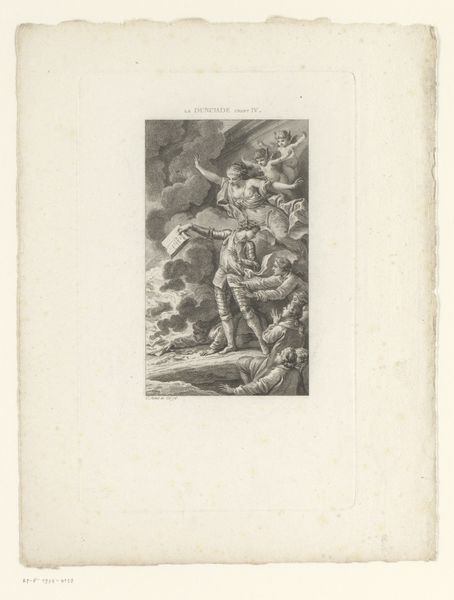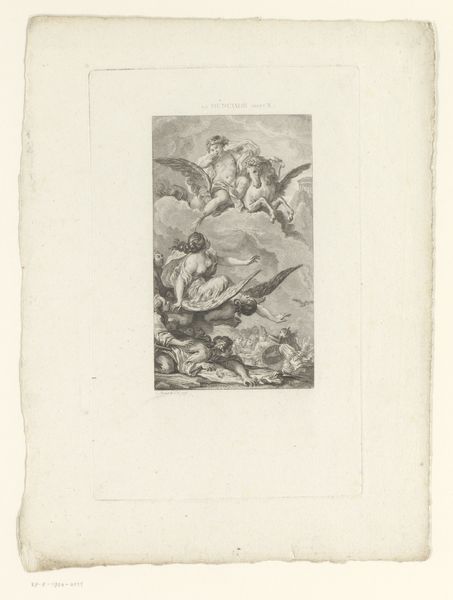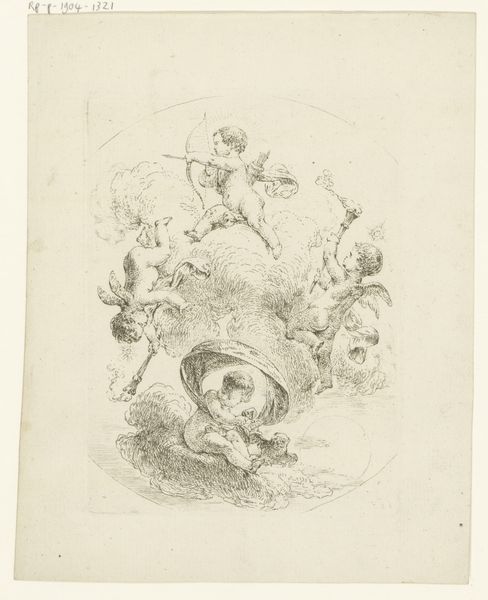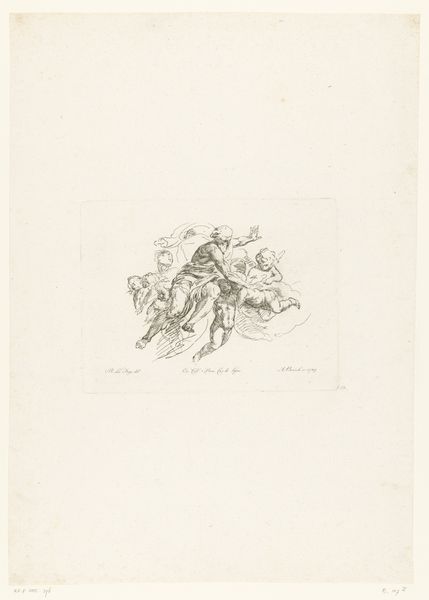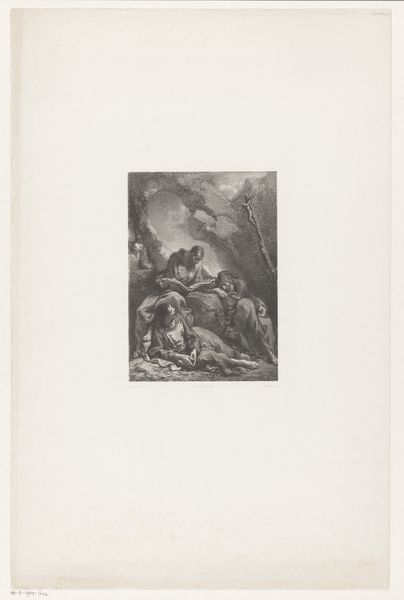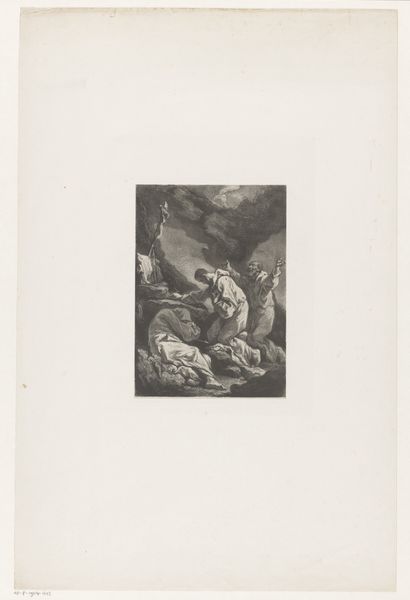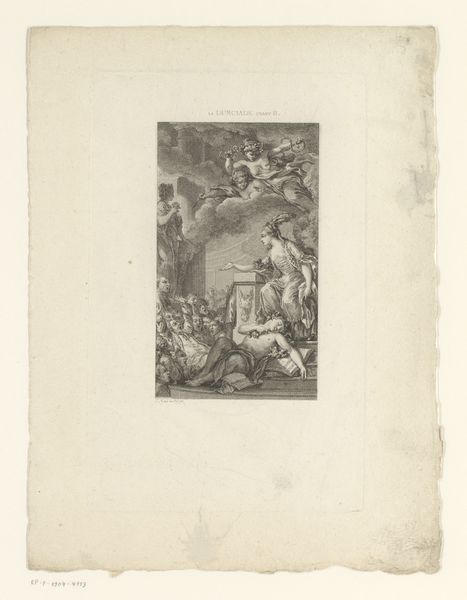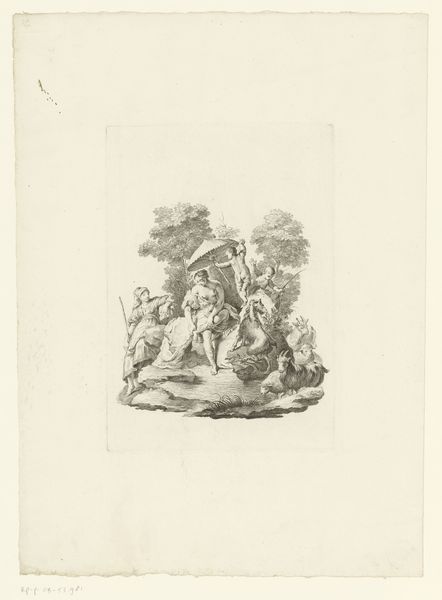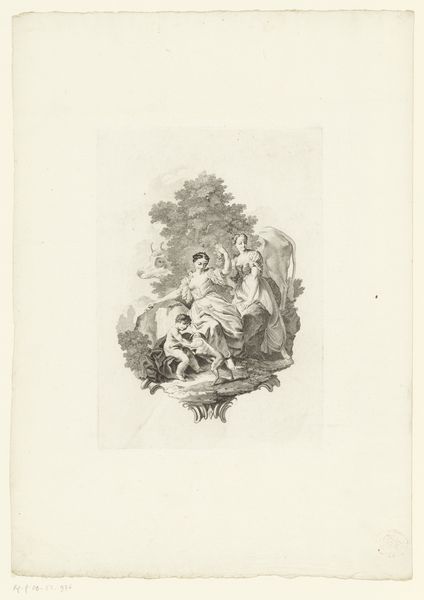
print, engraving
#
allegory
#
baroque
#
ink paper printed
# print
#
figuration
#
genre-painting
#
nude
#
engraving
Dimensions: height 289 mm, width 202 mm
Copyright: Rijks Museum: Open Domain
Editor: So, this is "Two Women with Two Cupids," an engraving from the late 17th or early 18th century by Martin Schedel. It has a very dreamlike, ethereal quality. What underlying narratives do you see within this image? Curator: The work is a pastiche of well-worn allegorical tropes during the Baroque era, steeped in male fantasy and the commodification of the female body. The artist’s male gaze, reinforced through classical allusion and soft rendering, positions these women as objects of desire while subtly erasing their individuality and agency. Can we really celebrate the artist's vision if it comes at the expense of the figures within it? Editor: I hadn't really thought of it that way, but now that you mention it, the women do seem to be passively posed. Is this passivity a common theme within Baroque representations of women? Curator: Often, yes. Their bodies are offered, like ornaments. What's particularly concerning, to me, is the way this dynamic is naturalized, and elevated through the allegorical figures of the cupids. They reinforce an image of coerced love and power imbalance as somehow divinely ordained, or at least desirable. It really reveals so much about societal structures from the time. How does the engraving technique affect your interpretation of the artist's statement? Editor: I guess I'd thought of the detailed lines as adding to its beauty, but perhaps it also further objectifies and meticulously details them? So what might seem innocent could also speak to the suppression of women. Thank you, that's a lot to reflect on. Curator: Precisely. Recognizing this power dynamic, and its artistic articulation is, for me, a really powerful form of resistance and a catalyst for deconstructing these visual legacies. It gives agency back to us, today, and reclaims narratives for tomorrow.
Comments
No comments
Be the first to comment and join the conversation on the ultimate creative platform.
